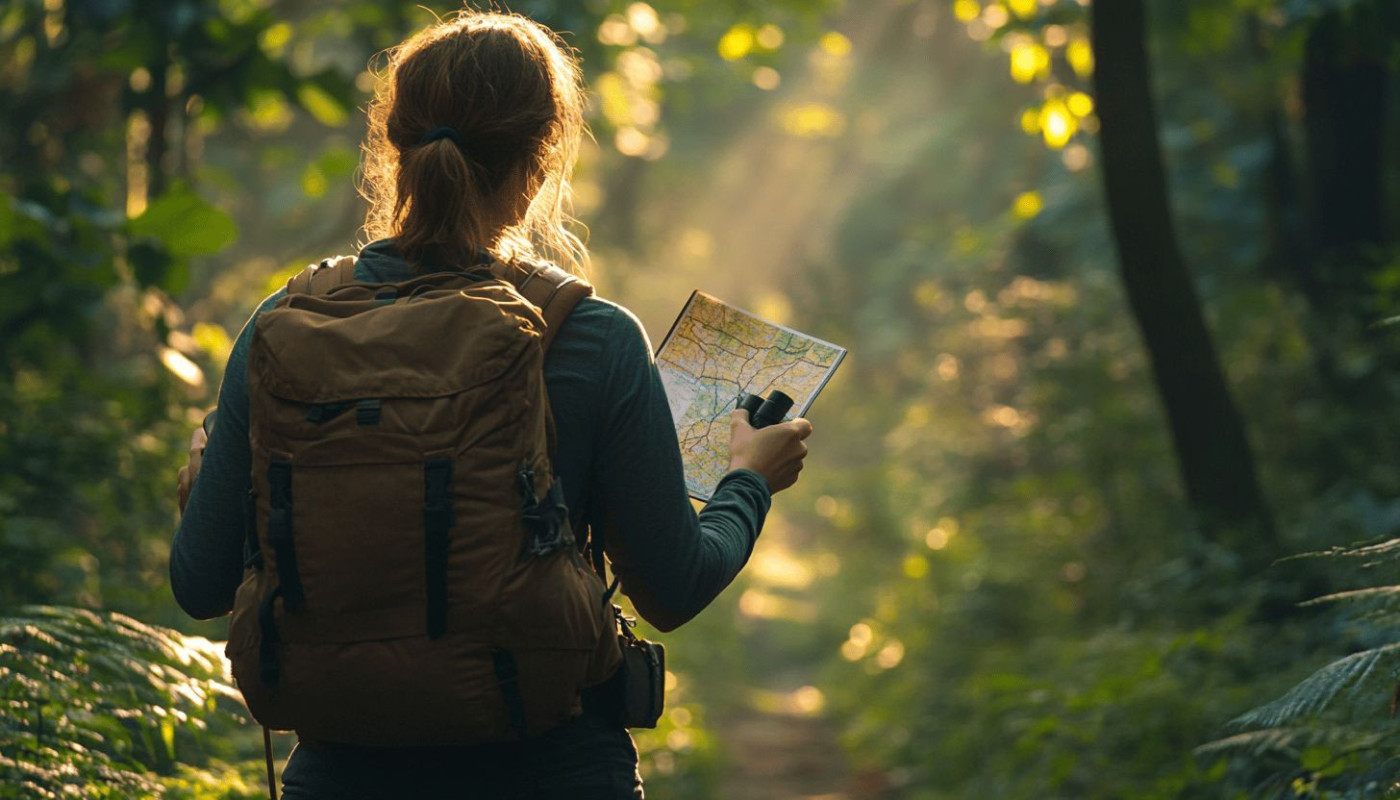Table of contents
In the shadowy corners of the world, amidst the forgotten relics of yore, lies an intriguing yet unexplored facet of tourism - Dark Tourism. This emerging trend sees curious adventurers seeking out abandoned and often eerie destinations, stepping off the beaten track to explore the vestiges of the past. The allure of dark tourism lies in its juxtaposition of thrill and history, providing a unique insight into a place's cultural and historical backdrop. These decrepit sites whisper stories of bygone eras, etching an indelible mark on the hearts of those who dare to venture. As we delve into the realms of dark tourism and the mysteries it holds, we invite you to join us on an exciting journey into the captivating world of abandoned places.
Understanding Dark Tourism
Dark Tourism, also known as Thanatourism, is a unique branch of tourism that has been garnering significant attention in recent years. Rooted deep in the human fascination for the unknown and the forbidden, Dark Tourism involves visiting sites associated with death, disaster, and decay, such as Abandoned Places.
The origins of Dark Tourism can be traced back to the Middle Ages when people would undertake long and perilous journeys to witness public executions. Over the years, this macabre curiosity evolved into a more organized form of tourism, reflecting societal changes and attitudes towards death and suffering.
In the modern context, Dark Tourism represents a potent confluence of History and Adventure. It provides visitors with a powerful, immersive experience that not only satiates their curiosity but also offers a poignant reminder of humanity's collective past. It is this blend of thrill and introspection that makes Dark Tourism an increasingly popular choice among both casual tourists and hardcore adventurers.
Moreover, Dark Tourism has profound implications for the way we perceive and engage with our historical and cultural heritage. By choosing to explore these abandoned, often forgotten sites, we are, in a way, acknowledging and commemorating the stories and the lives that once unfolded there. This, in essence, is the allure of Dark Tourism. Engaging in such Tourism Trends allows us to confront and reflect upon the darker aspects of our past, offering us a deeper understanding of our present and potentially shaping our future.
Noteworthy Abandoned Places Globally
The world is filled with Infamous Abandoned Places that have become a magnet for those intrigued by the darker side of tourism. These sites offer a unique blend of historical background, cultural significance, and a tinge of mystery, making them prime Dark Tourism Destinations.
Take, for instance, the eerie town of Pripyat in Ukraine. Once a bustling settlement, it now stands as a haunting testament to the Chernobyl disaster. Its deserted buildings, overgrown landscapes, and the chilling silence generate a profound echo of the catastrophe, drawing visitors who seek to comprehend the scope of such an event.
The island of Hashima in Japan, also known as Gunkanjima (Battleship Island), is another famous deserted destination. Known for its vast coal mines during the industrialization period, it now exists as a desolate symbol of the country's rapid modernization. The island's empty concrete buildings, which once housed thousands of workers, stand in stark contrast to the surrounding sea, providing an unsettling yet intriguing spectacle.
Or consider the well-preserved ghost town of Bodie in the United States. This former gold-rush hotspot now stands frozen in time, with its abandoned saloons, schools, and homes providing a unique window into the life of the late 1800s. As one of the country's designated Heritage Sites, Bodie offers a valuable link to a bygone era, attracting those who wish to delve into the nation's past.
Each of these Unique Attractions holds a distinct place in the annals of history, offering a tangible experience of the past. Their cultural significance and historical background provide a deeper understanding of the events that shaped them, making them crucial stops for any dark tourist. In their desolation, they offer us a chance to reflect on history, culture, and the transience of human endeavor.
Experiences and Stories Tied to Dark Tourism
Dark Tourism Experiences provide a unique perspective into history and culture, often offering chilling insights into humanity's past. The tales and anecdotes from both tourists and locals involved in exploring these abandoned and often eerie sites make up a significant portion of these experiences. These Tourist Stories bring out a vivid tapestry of emotions, reactions, and interpretations that are unique to each individual.
This form of travel often leaves an Emotional Impact on those who partake, eliciting feelings of sorrow, unease, fascination, and even catharsis. The Psychological Effects of these experiences are equally compelling. Dark tourism often pushes one to confront uncomfortable truths about mortality and history, leading to profound personal introspection.
An Impact Analysis of dark tourism reveals how it shapes one's understanding of historical events and human nature. It underscores the value of remembering and understanding our past, no matter how unsettling. Lessons Learned from such experiences are manifold, ranging from the appreciation of life and peace to the understanding of the darker aspects of human history.
While dark tourism may not be everyone's cup of tea, its allure lies in the rich experiences and lessons it offers. Through the eyes of a seasoned dark tourist or a psychologist, the impact of these experiences could lead to a deeper comprehension of the human condition.
Social and Ethical Aspects of Dark Tourism
Dark tourism is an emerging field that's recently been gaining recognition within the sphere of travel and tourism. While it presents a unique opportunity for exploration and learning, it also raises questions about societal conduct and ethical responsibility. This notion is especially true when it comes to the preservation of these abandoned places that tell stories of our past.
Preservation of these sites for future generations is a crucial aspect of dark tourism. It's vital to strike a balance between keeping these places accessible for visitors and ensuring that their historical integrity is maintained. This concept ties in significantly to the idea of Sustainable Tourism, a practice that advocates for minimizing the negative impacts of tourism while promoting the welfare of the local communities and the preservation of cultural heritage.
Furthermore, the role of the local community in dark tourism shouldn't be underestimated. These communities often hold a deep connection to the history of these places, and their involvement can add a personal touch to the visitor's experience. In addition, the income generated from tourism can support the local economy, making the practice mutually beneficial.
However, the social impact of dark tourism is a double-edged sword. While it can generate economic benefits, it can also lead to the commodification of tragic histories. Therefore, the need for Visitor Ethics is paramount. Tourists need to approach these sites with respect and sensitivity, understanding that they are not just sites of interest, but also locations of historical significance and often, tragedy.
In conclusion, the allure of dark tourism lies in its offer of a unique and thought-provoking experience. Nonetheless, Ethical Tourism should be at the forefront of this practice, ensuring the rightful preservation of these sites, respect for the local communities, and maintaining a responsible approach towards the visitation of these sites.
The Future of Dark Tourism
As we contemplate the upcoming trajectory of dark tourism, the concept of "Trend Forecasting" becomes increasingly relevant. The "Future of Dark Tourism" will inevitably be shaped by a myriad of factors including novel "Tourism Trends", emerging "Challenges", and unfolding "Opportunities".
Dark tourism, in essence, is a subset of the tourism industry that is continually evolving. Its future course will undoubtedly be influenced by societal changes, technological advancements, and shifts in tourist preferences. The growth of social media and virtual reality, for instance, could potentially transform the way dark tourism sites are visited and experienced. Thus, anticipating these changes is of paramount significance.
On the other hand, it is also vital to consider the hurdles that may arise. As dark tourism gains popularity, it may face scrutiny and ethical debates. Balancing the respect for the sites and their historical significance with the need to offer an engaging experience for tourists will be a key "Challenge".
Despite these potential difficulties, the "Future of Dark Tourism" also presents numerous "Opportunities". As a growing niche, it could lead to the revival of overlooked historical sites and contribute to local economies. Furthermore, it offers a unique platform for education and raising awareness about historical events and societal issues.
Ultimately, the "Tourism Industry Impact" will be significantly shaped by the future trajectory of dark tourism. As dark tourism continues to evolve, so too will its influence within the broader tourism sector. The effects can be far-reaching, affecting everything from destination marketing to sustainable tourism practices. The allure of exploring abandoned places and the past's darker aspects is unlikely to fade, signifying a promising potential for the growth of dark tourism.
Similar articles














